1. Flintstones Chewable Vitamins
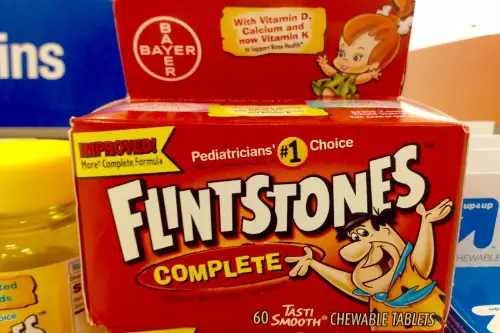
Who didn’t love chomping on Fred or Barney in the morning? Flintstones vitamins made kids feel like they were getting candy with their breakfast, and parents felt like they were sneaking in some nutrition. But the truth is, they were often packed with artificial sweeteners, food dyes, and more sugar than you’d expect from a “healthy” product. Some versions even contained aspartame and synthetic colors like Red 40.
They were also easy to overdose on—delicious enough that many kids treated them like candy, not medicine. Accidental vitamin overdoses were a legit issue, especially with iron-containing versions. Yet they stayed on shelves with smiling Stone Age faces, as if nothing could go wrong. A health product dressed up like candy is always going to walk a fine line.
2. SunnyD
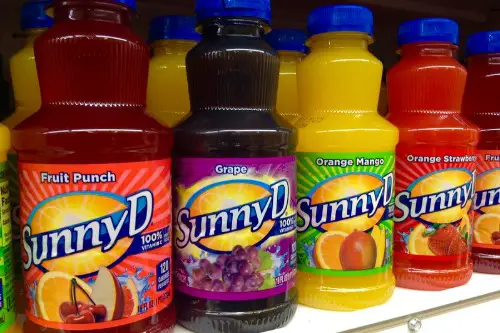
We all remember the hype when someone whipped open the fridge and shouted, “We’ve got SunnyD!” That blinding orange bottle felt like liquid sunshine, and somehow it got a health halo in the ’90s—even though it was mostly corn syrup and artificial flavor. Kids thought they were drinking something almost as good as orange juice, but Sunny Delight had less than 5% real juice in most formulations. Even worse, there were reports in the UK of kids turning orange from drinking too much—due to the added beta-carotene.
It wasn’t marketed as a soda, so it seemed like the responsible choice. But nutritionally, it was closer to Tang than anything fresh-squeezed. Parents were duped by the “vitamin-enriched” label, thinking they were doing their kids a favor. In retrospect, SunnyD was a sugar bomb in disguise with a pretty aggressive PR team.
3. Lunchables
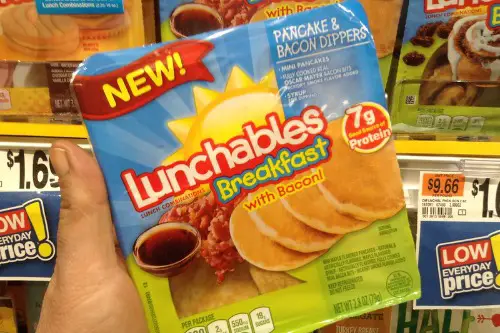
Lunchables were the ultimate cafeteria flex, with their neat compartments and choose-your-own-adventure vibe. Kids loved the independence, the processed meat coins, the cheddar rectangles, and maybe a Capri Sun or mini Butterfinger to round it out. But looking at the nutrition label now? Yikes.
Many Lunchables packed more sodium and saturated fat than a fast food burger. Some versions topped 800 calories, most of it from processed meat, refined carbs, and added sugars. Yet, they were marketed like a healthy lunch alternative that made life easier for parents. In reality, it was a chemistry set of preservatives that somehow passed as lunch.
4. Cap’n Crunch
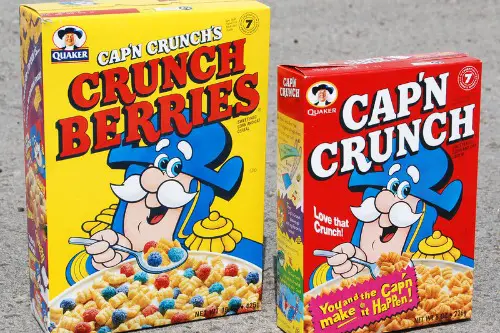
Cap’n Crunch had that uncanny ability to shred the roof of your mouth while still being totally irresistible. The ’90s ads made it seem like the cereal equivalent of a Saturday morning cartoon—fun, wacky, and full of adventure. But the original formula had more sugar per serving than a glazed donut. And don’t let the “Cap’n” title fool you—he was never a real naval officer.
Despite being sold as a hearty breakfast, Cap’n Crunch offered very little fiber or actual nutritional value. It was basically sugar-glazed corn flour pellets with some yellow dye thrown in. Parents trusted it because of the brand recognition and cartoon marketing. But it was about as nutritious as candy with milk poured on top.
5. Kool-Aid Bursts
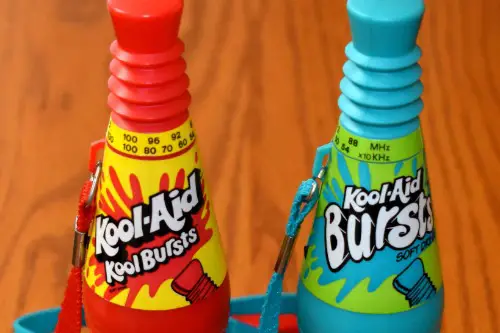
These squeezable plastic bottles were the badge of summer playdates and backyard chaos. Kool-Aid Bursts came in radioactive colors with names like “Blue Raspberry” and “Sharkleberry Fin,” which somehow made them feel extra legit to kids. But a glance at the label reveals no juice whatsoever—just flavored sugar water with a hit of food dye. And let’s not forget the mouth-staining power of those colors.
They were incredibly cheap, which made them an easy choice for budget-conscious parents. But they also taught an entire generation to associate hydration with candy-flavored drinks. Some versions had upwards of 25 grams of sugar per bottle—almost a day’s worth for a child. Yet they were sold right alongside juice boxes, as if they were remotely in the same category.
6. Gak
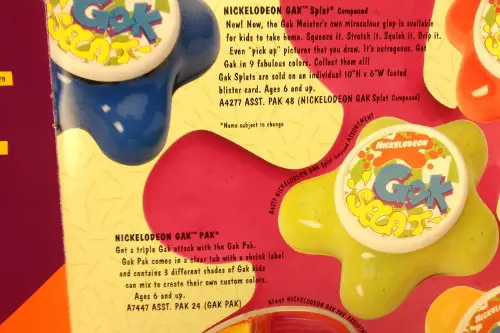
Technically not a food, but good luck convincing a ’90s kid they weren’t supposed to at least taste it. Nickelodeon’s Gak was marketed as ooey-gooey fun you could stretch, squish, and yes, sometimes blow bubbles with. But let’s be real: a surprising number of kids sampled it, and it was often left lying around where toddlers and pets could get to it. The ingredients weren’t toxic, but they weren’t exactly digestible either.
Made of polyvinyl alcohol and borax, Gak was a slime chemistry experiment with some added scent and color. While it was a cool tactile toy, it also sometimes caused skin irritation and wasn’t great if it got stuck in hair or carpet. And yet, it came in candy-colored containers that made it feel like it belonged next to your Fruit Roll-Ups. Just another reminder that safety standards were a bit… flexible back then.
7. Trix Cereal
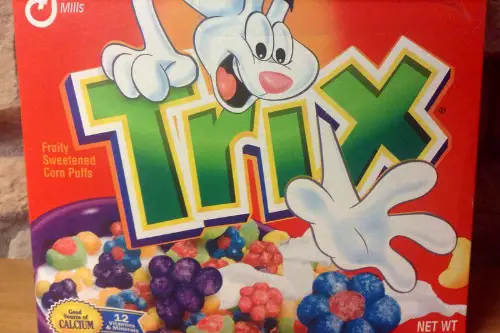
Trix were for kids—and definitely not for nutritional labels. With neon-colored puffs and ads starring a manic rabbit, it was hard not to be enchanted. But the cereal was mostly sugar—over 40% by weight during the ’90s. Plus, those “fruit” flavors? Totally artificial.
The box often had claims like “fortified with vitamins and minerals,” which helped parents justify the purchase. But the micronutrients were doing heavy PR work for what was essentially candy in a bowl. It wasn’t until 2006 that General Mills started dialing back the artificial colors (and briefly turned Trix boringly pastel). Nostalgia aside, we were spoon-feeding ourselves dessert and calling it breakfast.
8. Easy-Bake Oven

The Easy-Bake Oven was every kid’s first introduction to the culinary arts—or at least to microwaving sugar with a lightbulb. Powered by a 100-watt incandescent bulb, it technically “baked” cakes, brownies, and cookies, though results varied wildly. The mixes were full of preservatives and artificial flavors, and they usually tasted more like chalk than dessert. Still, it felt magical to cook your own food with a toy.
But here’s the dark side: Easy-Bake Ovens caused a slew of injuries, including serious burns and finger entrapments. In 2007, over 1 million units were recalled after dozens of kids were hurt. Yet in the ’90s, few parents blinked twice about letting their kids stick their hands in a lightbulb-powered oven. Cute packaging didn’t make it any less dangerous.
This post 8 Products Every ’90s American Kid Trusted That Were Questionable at Best was first published on American Charm.


